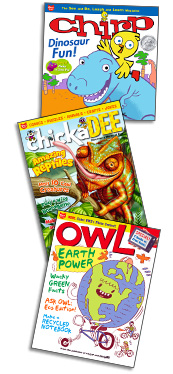
Owlkids, based in Toronto, Canada, may be best known for nearly four decades of magazine publishing in North America, but in the past six years, the publisher has been steadily building a book publishing program to match its magazines' success. With its purchase of Maple Tree Press in 2008, Owlkids gained a backlist of more than 100 titles, predominantly in the area of nonfiction, and has been expanding and diversifying its mix of titles, from preschool up to junior high, ever since.
Long before social media, letters to the editor proved the most effective means for editors at Owlkids to learn what their readers liked and disliked. For 36 years, Owlkids has heard directly from its more than 200,000 subscribers in North America through the readers (and parents) of Chirp (aimed at ages 3-6), chickaDEE (ages 6-9) and OWL (9-13) magazines. Owlkids has used what it's learned from those direct ties to kids to inform publishing decisions for the magazines as well as the books.
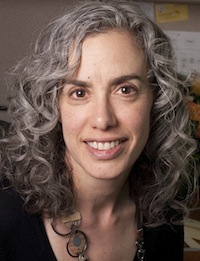 Recently, Owlkids brought Karen Boersma on board as publisher of the book division, formerly publisher of Kids Can Press, with a mandate to expand both the scope and the size of the list. Owlkids currently publishes 20 books a year, and Boersma said the house intends to double that within the next three to five years.
Recently, Owlkids brought Karen Boersma on board as publisher of the book division, formerly publisher of Kids Can Press, with a mandate to expand both the scope and the size of the list. Owlkids currently publishes 20 books a year, and Boersma said the house intends to double that within the next three to five years.
Nonfiction will continue to be a key part for the program, but the approach will likely continue to evolve in new directions. "I think most publishers who publish nonfiction feel like we're competing with the Internet," Boersma said. "So here at Owlkids, we're working to make sure all of our books supply the additional context necessary for children to truly understand a topic." Boersma cited The Secret Life of Money by Kira Vermond, illustrated by Clayton Hanmer, as a perfect example: "We wanted kids to understand the history and cultural side of money as well as the emotional side of it."
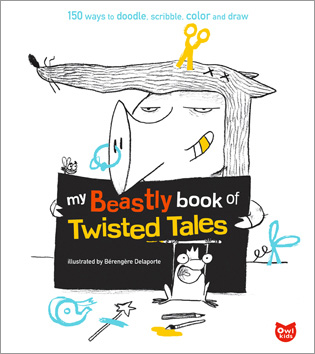
Another example of the approach to nonfiction from this season is Pick Up Your Pen: The Art of Handwriting by Monica Dengo, which teaches kids how to write in cursive. It's a skill that's not taught much anymore in schools, Boersma explained. And the editorial team's years of focusing on crafts and activities in the magazines informed the bestselling Beastly series, which now includes four titles at 150 pages each. This fall Owlkids will publish My Beastly Book of Tangled Tinsel for the holidays.
Judy Brunsek, sales director for Owlkids, noted that the company also wants to reach children as they begin reading: "That's where we put a lot of focus, starting last fall and moving through this year." Moving beyond nonfiction and into character-based picture books has also paved the way from the school and library market into the trade, according to Brunsek: "We're looking to grow a broader trade presence at national accounts and independent stores." To that end, Owlkids is working with ABA programs to raise booksellers' awareness; last fall they mailed all children’s bookstores a poster featuring the Vole Brothers, characters originally created by Roslyn Schwartz for Chirp, whose popularity warranted a book of their own.
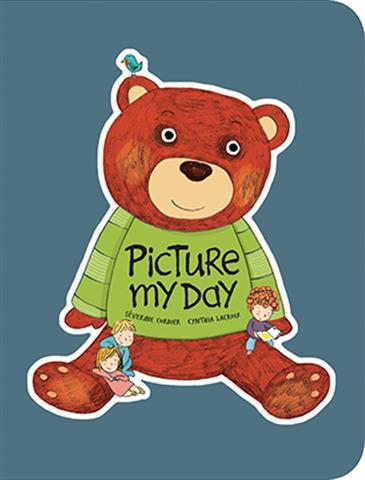 Most of the Owlkids spring picture books, however, started as original projects completely independent of the magazines. Picture My Day, created by Séverine Cordier and Cynthia Lacroix, introduces first words to children as it follows three siblings through their daily routine. This fall’s follow-up title, Picture My World, follows the same children through more event-based experiences, such as a birthday party, a first pet and scraping a knee. This spring's highly lauded Martin on the Moon by Martine Audet, illustrated by Luc Melanson, celebrates creativity in both the student hero and his teacher, and All By Myself!, an exploration of a child's (or chick's) first foray into independence by Geraldine Collet, illustrated by Coralie Saudo, has also been receiving strong reviews. Such character-based titles address Owlkids' mission to create books that "speak to the whole child," as Jennifer Canham, group publisher of Owlkids books and magazines, put it.
Most of the Owlkids spring picture books, however, started as original projects completely independent of the magazines. Picture My Day, created by Séverine Cordier and Cynthia Lacroix, introduces first words to children as it follows three siblings through their daily routine. This fall’s follow-up title, Picture My World, follows the same children through more event-based experiences, such as a birthday party, a first pet and scraping a knee. This spring's highly lauded Martin on the Moon by Martine Audet, illustrated by Luc Melanson, celebrates creativity in both the student hero and his teacher, and All By Myself!, an exploration of a child's (or chick's) first foray into independence by Geraldine Collet, illustrated by Coralie Saudo, has also been receiving strong reviews. Such character-based titles address Owlkids' mission to create books that "speak to the whole child," as Jennifer Canham, group publisher of Owlkids books and magazines, put it.
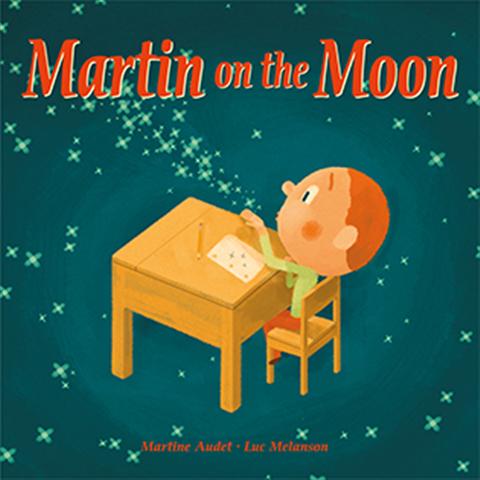
Because the magazines serve as a direct tie to children, they offer an opportunity to "audition" various talents, too, to see which themes and artwork strike a chord with young people. The sibling stars of Roslyn Schwartz's The Vole Brothers are one example, as is the artwork of Dave Whamond, who created My Think-a-ma-Jink and the upcoming fall book Oddrey. "We know what resonates with children, parents, and teachers," Canham said. "We have a lot of experience working with authors and illustrators to develop characters that mean a lot to kids." Canham believes Owlkids' magazines can serve not only as a kind of field-testing resource but also as word-of-mouth. "For a small children's publisher, there's not always an easy way to advertise to a broad audience," she said, "but we have 200,000 children in our audience, and an opportunity to feature the books in our magazines, which in turn leads our readers to head out to bookstores to find our books."






 Recently, Owlkids brought Karen Boersma on board as publisher of the book division, formerly publisher of Kids Can Press, with a mandate to expand both the scope and the size of the list. Owlkids currently publishes 20 books a year, and Boersma said the house intends to double that within the next three to five years.
Recently, Owlkids brought Karen Boersma on board as publisher of the book division, formerly publisher of Kids Can Press, with a mandate to expand both the scope and the size of the list. Owlkids currently publishes 20 books a year, and Boersma said the house intends to double that within the next three to five years.
 Most of the Owlkids spring picture books, however, started as original projects completely independent of the magazines. Picture My Day, created by Séverine Cordier and Cynthia Lacroix, introduces first words to children as it follows three siblings through their daily routine. This fall’s follow-up title, Picture My World, follows the same children through more event-based experiences, such as a birthday party, a first pet and scraping a knee. This spring's highly lauded Martin on the Moon by Martine Audet, illustrated by Luc Melanson, celebrates creativity in both the student hero and his teacher, and All By Myself!, an exploration of a child's (or chick's) first foray into independence by Geraldine Collet, illustrated by Coralie Saudo, has also been receiving strong reviews. Such character-based titles address Owlkids' mission to create books that "speak to the whole child," as Jennifer Canham, group publisher of Owlkids books and magazines, put it.
Most of the Owlkids spring picture books, however, started as original projects completely independent of the magazines. Picture My Day, created by Séverine Cordier and Cynthia Lacroix, introduces first words to children as it follows three siblings through their daily routine. This fall’s follow-up title, Picture My World, follows the same children through more event-based experiences, such as a birthday party, a first pet and scraping a knee. This spring's highly lauded Martin on the Moon by Martine Audet, illustrated by Luc Melanson, celebrates creativity in both the student hero and his teacher, and All By Myself!, an exploration of a child's (or chick's) first foray into independence by Geraldine Collet, illustrated by Coralie Saudo, has also been receiving strong reviews. Such character-based titles address Owlkids' mission to create books that "speak to the whole child," as Jennifer Canham, group publisher of Owlkids books and magazines, put it.

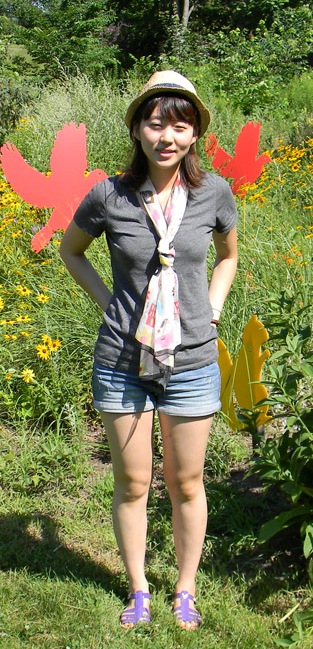 In her extraordinary debut, artist
In her extraordinary debut, artist 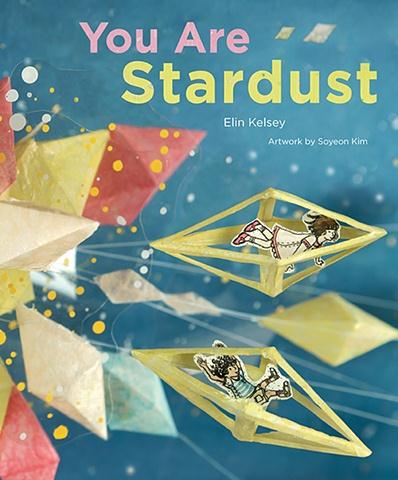 Do you work with the photographer on how best to shoot your models?
Do you work with the photographer on how best to shoot your models? 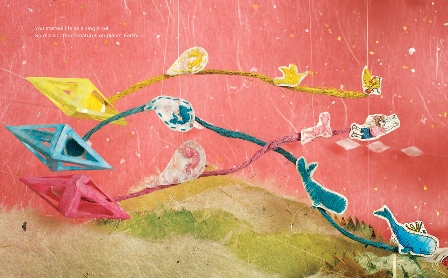

 As editor of chickaDEE magazine for 10 years, beginning in the early 1990s, Catherine Ripley knows her readers. Her first book, Why?, grew directly out of the questions that readers asked for chickaDEE's annual q&a issue. "We invited kids to submit their questions, and we'd answer perhaps 10 questions in an issue," Ripley explained. "Their voice was very strong in the magazine." Her latest book, How?, a companion volume, comes out of that same approach.
As editor of chickaDEE magazine for 10 years, beginning in the early 1990s, Catherine Ripley knows her readers. Her first book, Why?, grew directly out of the questions that readers asked for chickaDEE's annual q&a issue. "We invited kids to submit their questions, and we'd answer perhaps 10 questions in an issue," Ripley explained. "Their voice was very strong in the magazine." Her latest book, How?, a companion volume, comes out of that same approach.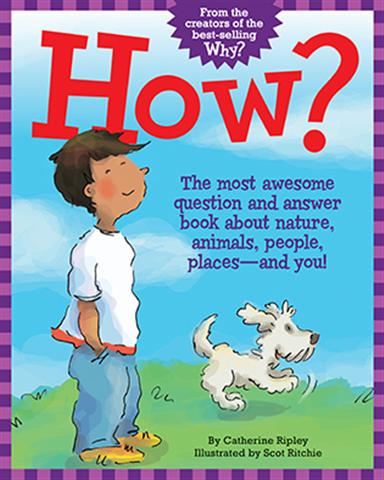 When asked if she's always conscious of the children's voices, Ripley responded, "Kids are so engaging and they're so honest, and they come at things so differently than I do as an adult." She added, "It really pays to go back into the classroom again and again. You get taken aback by the wonderful world we live in, as seen through a child's eyes."
When asked if she's always conscious of the children's voices, Ripley responded, "Kids are so engaging and they're so honest, and they come at things so differently than I do as an adult." She added, "It really pays to go back into the classroom again and again. You get taken aback by the wonderful world we live in, as seen through a child's eyes." The organization of How? also owes a debt to Ripley's magazine experience, with chapters such as "Happy Birthday!," which includes everything from "How did birthday parties get started?" to "Why do balloons pop?" and "How does batter turn into cake?" She believes that the book had to be "really rooted in a kid's experience." The annual q&a issues, for instance, always focused on a theme, such as volcanoes. The chapter called "Airport Good-byes" came from the students Ripley visited in schools. She asked children where they went in the car, and one answer was, "To the airport to pick up my grandmother." Ripley began with 839 questions, then whittled them down to the nearly 75 that appear in the book.
The organization of How? also owes a debt to Ripley's magazine experience, with chapters such as "Happy Birthday!," which includes everything from "How did birthday parties get started?" to "Why do balloons pop?" and "How does batter turn into cake?" She believes that the book had to be "really rooted in a kid's experience." The annual q&a issues, for instance, always focused on a theme, such as volcanoes. The chapter called "Airport Good-byes" came from the students Ripley visited in schools. She asked children where they went in the car, and one answer was, "To the airport to pick up my grandmother." Ripley began with 839 questions, then whittled them down to the nearly 75 that appear in the book.